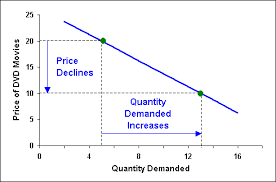Economics focuses on the way the market uses demand and supply to create a price as well as influence the producer strategy and consumer behavior. One of the basic tenets of economics is want vs. need. But, what exactly are they?
A Need…
A need is something you should have, something that you cannot do without. An excellent example is food. When you don’t eat, you will not survive for long. Many individuals have gone for days without eating, but they eventually ate lots of food. Although you might not eat a lot, you need to eat to live.
A Want…
A want is something you would like to have. Although it is not a necessity, it still is a good thing to own or have. Music is one example of a want. While some people are likely to argue that that music is an absolute need since they cannot do without it, but you do not need music to live. You do have to eat, however.
These are just general categories, and some categories have both wants and needs. Food is one instance that has both. You need to consume minerals, vitamins and protein. Ice cream is a want that you really do not have to have to survive. To many people ice cream tastes good and they like to eat it, they want it, but they do not need it. This is unlike nutrients you get from sources like meat, nuts or soy products.











